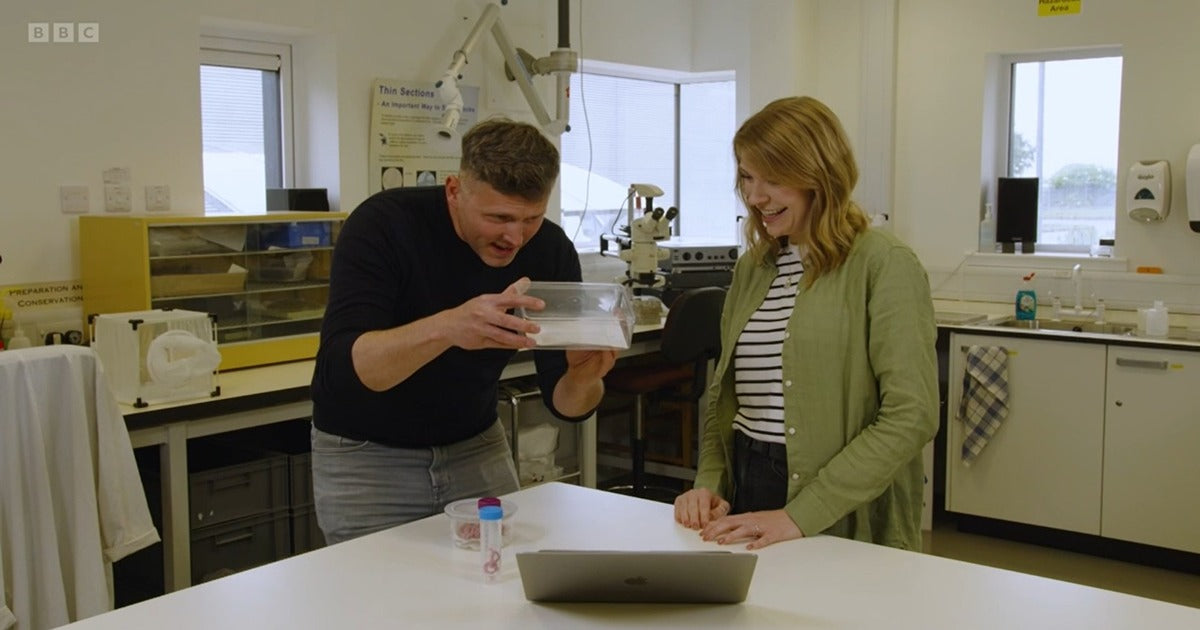
Clothes Moth Larvae Can Cause Extensive Damage To Knitwear, Carpets, Rugs & A Range Of Fabrics
Clothes Moths can be a common and consistent pest in homes. There are two main culprit species which cause similar damage. Most commonly identified is the Webbing Clothes Moth, Tineola bisselliella. The larvae of this species can be found feeding within a dense webbing. Another common Clothes Moth species is the Case-Making Clothes Moth, Tinea pellionella. The larvae of this species often create a small case for themselves out of clothing fibres.

The larvae of both these species of Clothes Moth will damage clothing fibres.
The larvae of Clothes Moth will feed on, and damage, many different types of garments, especially those of natural origin such as natural wool. Carpets can also be attacked, and warm, contained environments, such as wardrobes, cupboards and airing cupboards, provide an ideal environment for the larvae to develop. The larvae or caterpillars will make irregular holes in fabrics.

An example of typical Clothes Moth larvae damage to fabric.
Clothes Moths can be active all year round between temperatures of 10 and 33°C, with up to 4 life cycles per year. Although the adult moths may only survive up to a month, the larvae survive and feed for 2-3 months at a time.
Use Our Clothes Moth Traps & Trichogramma Parasitic Wasps To Fend Off Infestations
To identify if Clothes Moths are present before you sustain damage, we recommend placing a Clothes Moth Pheromone Trap near, or on, some clothing. This will lure and catch male Clothes Moths and provide you with an early warning of impending Clothes Moth activity.

Our Clothes Moth Traps lure & catch male Clothes Moths. This reduces mating, depleting moth numbers, and also provides you with an infestations indicator.
Clothes Moth Egg Killer Sachets
For a natural and biological control of Clothes Moths, introduce our Clothes Moth egg parasite: Trichogramma evanescens. These brilliant parasitic wasps will seek out Clothes Moth eggs, parasitising them and laying their own eggs inside, killing the unborn Clothes moth larvae. They are harmless to humans and animals and remain only for as long as there are Clothes Moth eggs present.
These tiny wasps are supplied inside a sachet which releases approximately 2000 wasps each week. Simply place the sachet within your wardrobes, cupboards, or drawers, or on top of clothing or infested carpets. Each sachet contains a readymade release hole so does not require opening.

Our Clothes Moth Egg Killer Sachets contain tiny parasitic wasps which parasitise and kill Clothes Moth eggs.
Select From Our Scheduled Programmes Of Clothes Moth Egg Killer Sachets For Best Results
The most effective way to utilise Clothes Moth Egg Killer Sachets is by opting for a scheduled programme of introductions. We have a wide range of programme options available to suit a variety of needs. The programmes are designed with the aim to fully break the Clothes Moth life cycles and range from introductions of 1 sachet per month for 2 months to 10 sachets per month for 12 months. Individual or single use instructions are also available if you'd like to see results for yourself before committing to a programme.

Opt for programme of Clothes Moth Egg Killer Sachet Introductions for best results.
Trichogramma wasps cannot be stored for more than a few days before use. When using multiple applications, opt for fresh deliveries rather than storing the sachets.
Comments (Responses)
Julian Ives
Hi Talitha, thanks for getting in touch.
In a centrally heated house it is possible that Clothes Moth can be present all year round unfortunately. If you are still identifying the adult moths and seeing damage to your clothes or fabrics (or simply wish to have an ongoing protection to prevent such damage), we would suggest continuing with applications of our Trichogramma Moth Egg Killer Sachets or Clothes Moth Traps, both of which you can find via the link below:
https://www.dragonfli.co.uk/collections/clothes-moths
It is true that you will have higher numbers of moths in the summer months though yes.
Hope this helps but if you need any further advice please just let us know.
Kind regards, Julian Ives [Director, Dragonfli]
Talitha Middleton
Hello, do you think this is a good time for introducing the wasps? Summer is better? I had more mothe during summer. Can’t see much now





18 March, 2023
Claire
Hi – the recommendation for the old cards was to use one per closed space/cupboard/wardrobe. Is this still the case with the new sachets? We also have moths in the underbed drawers, possibly a separate airing cupboard, and in a very small basement room